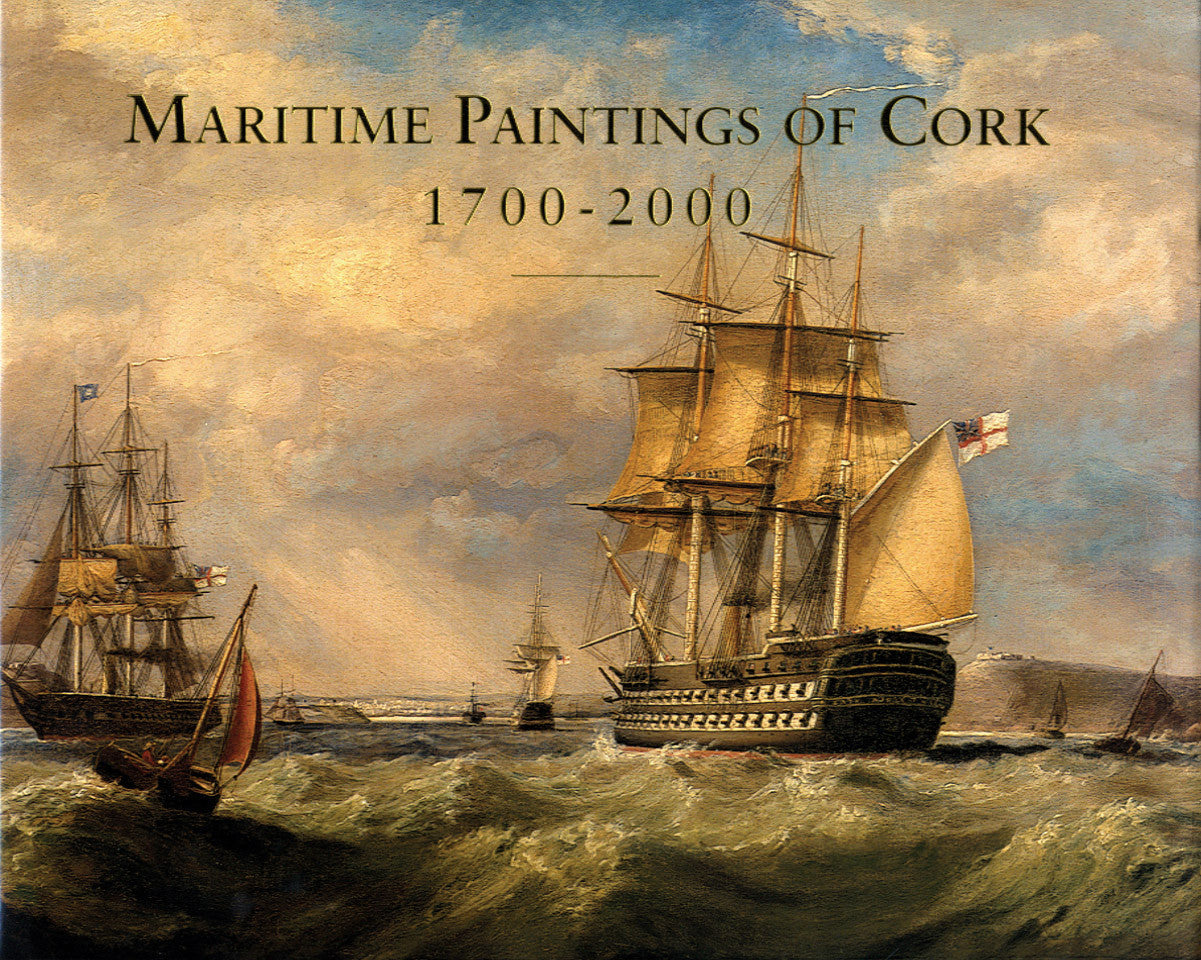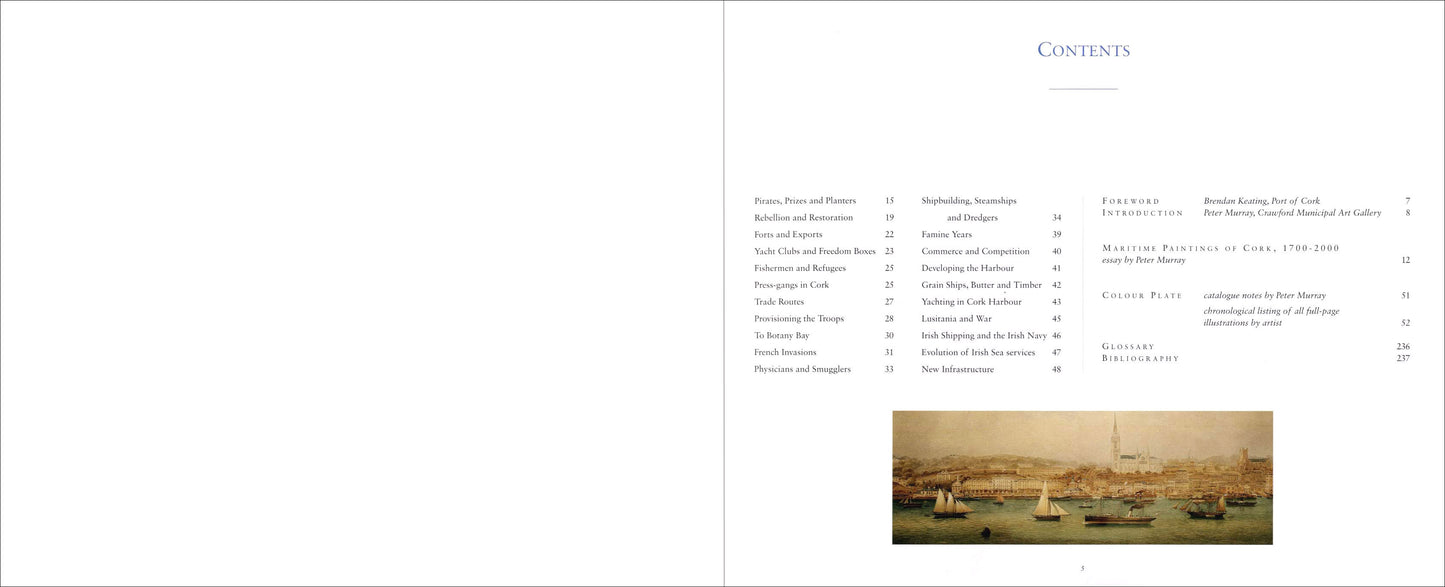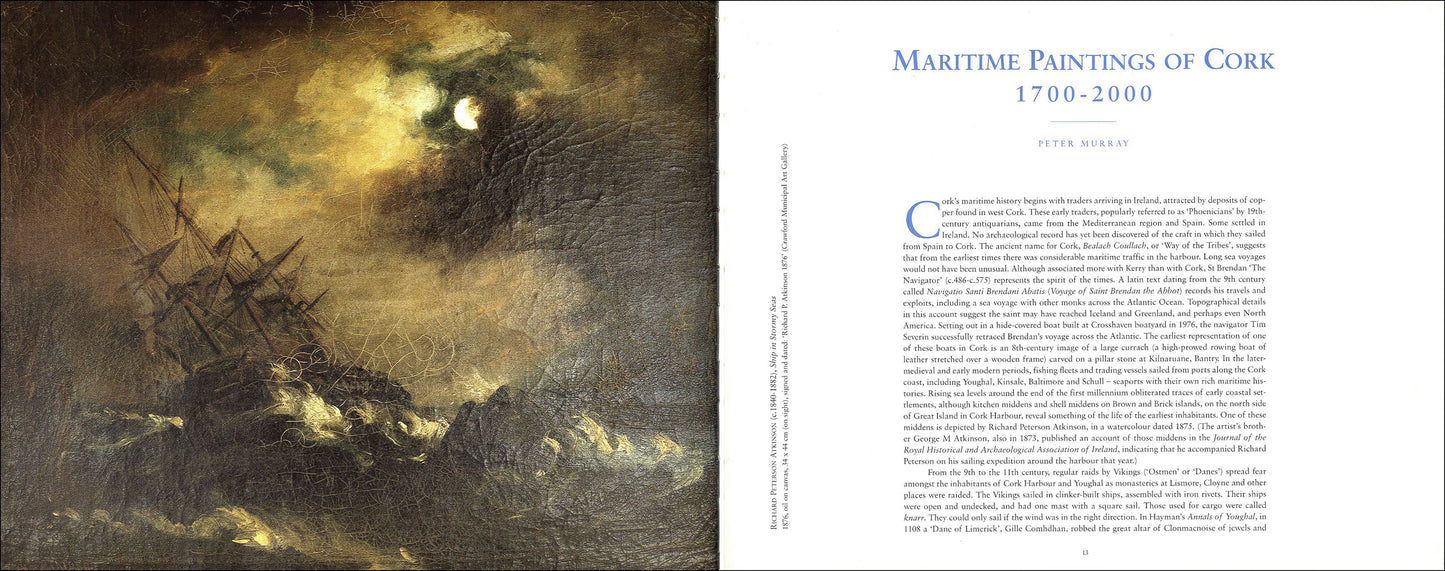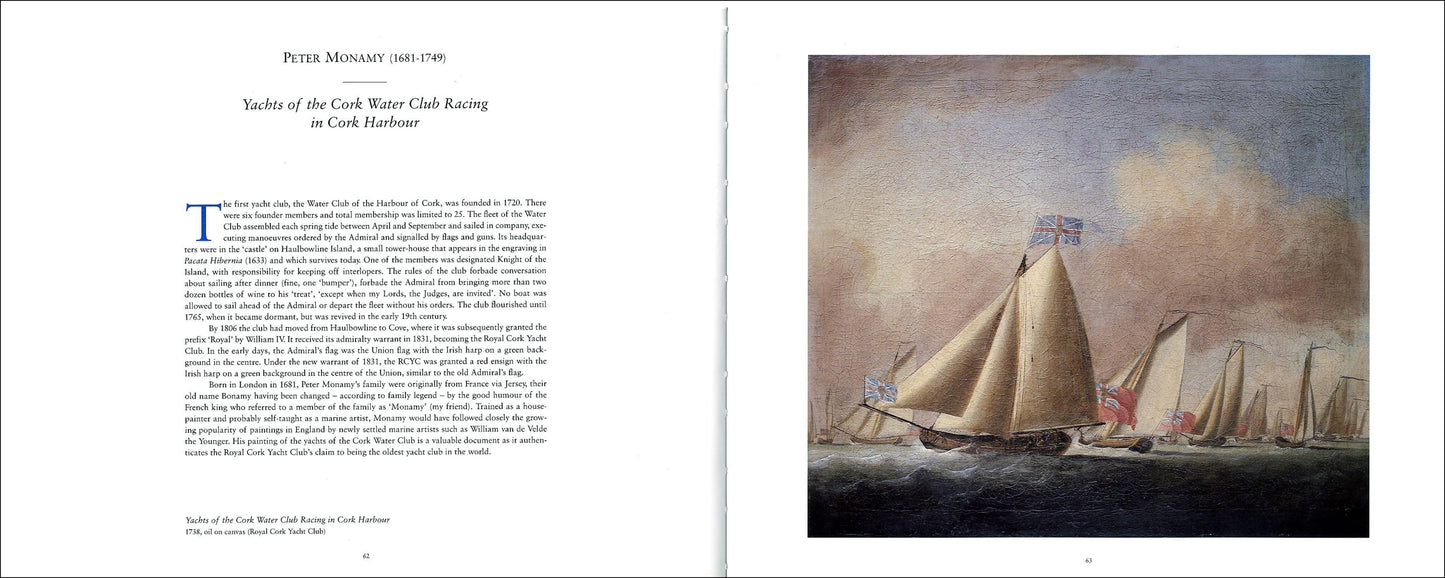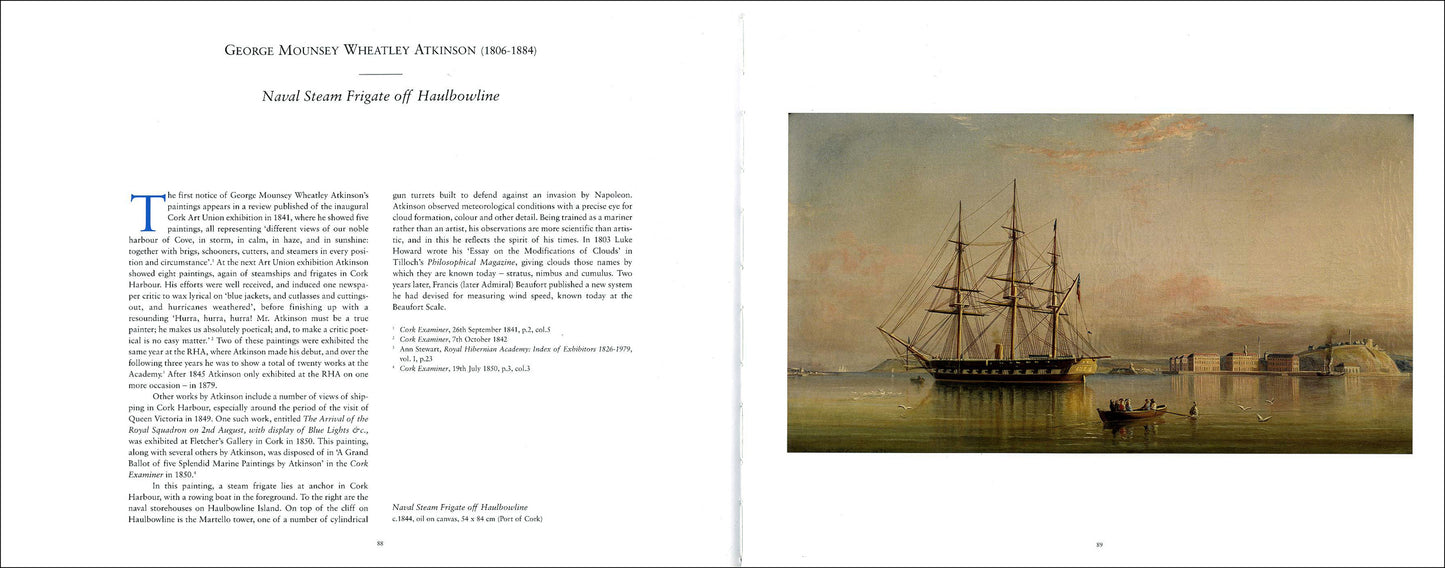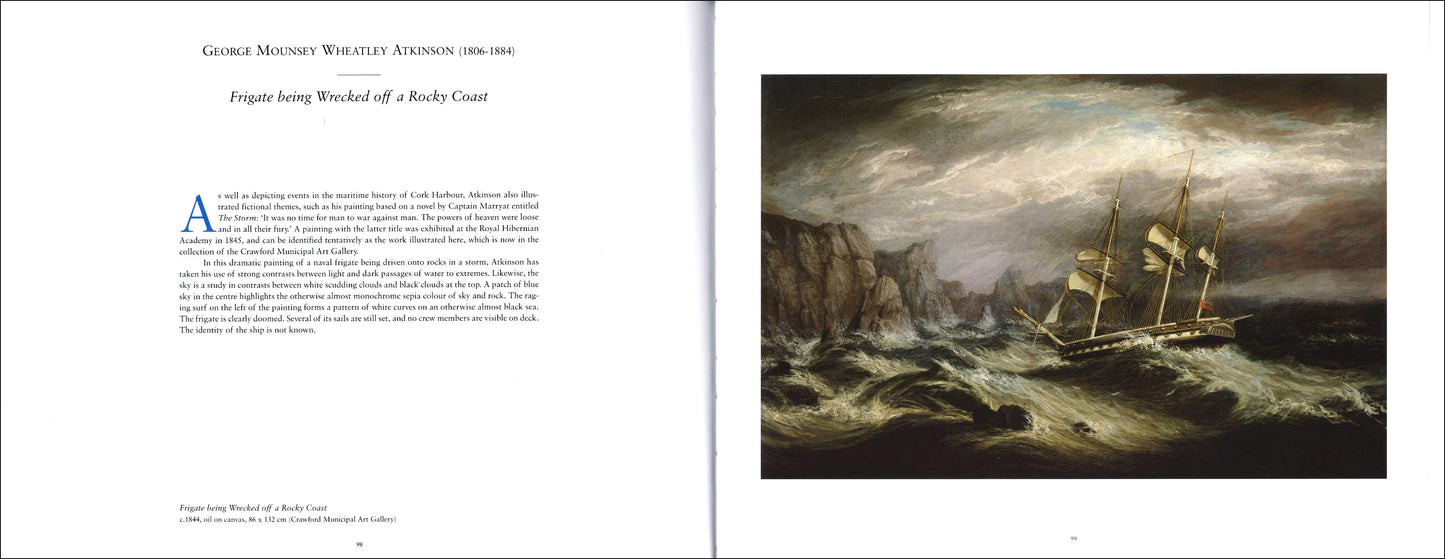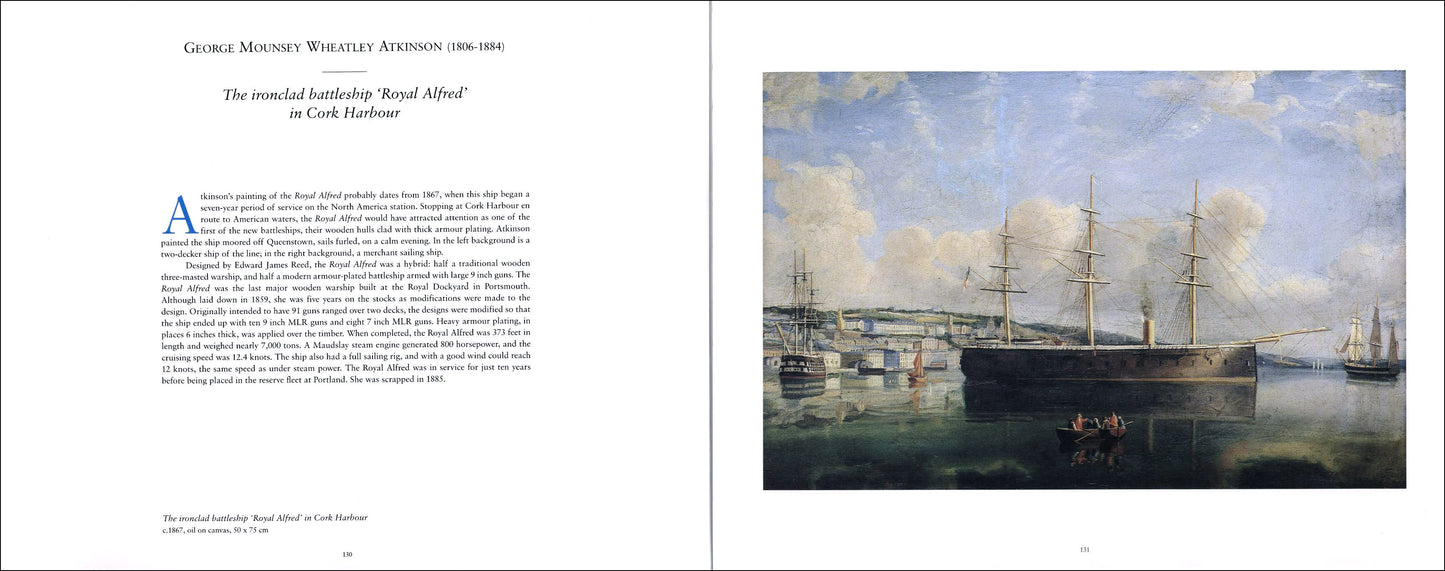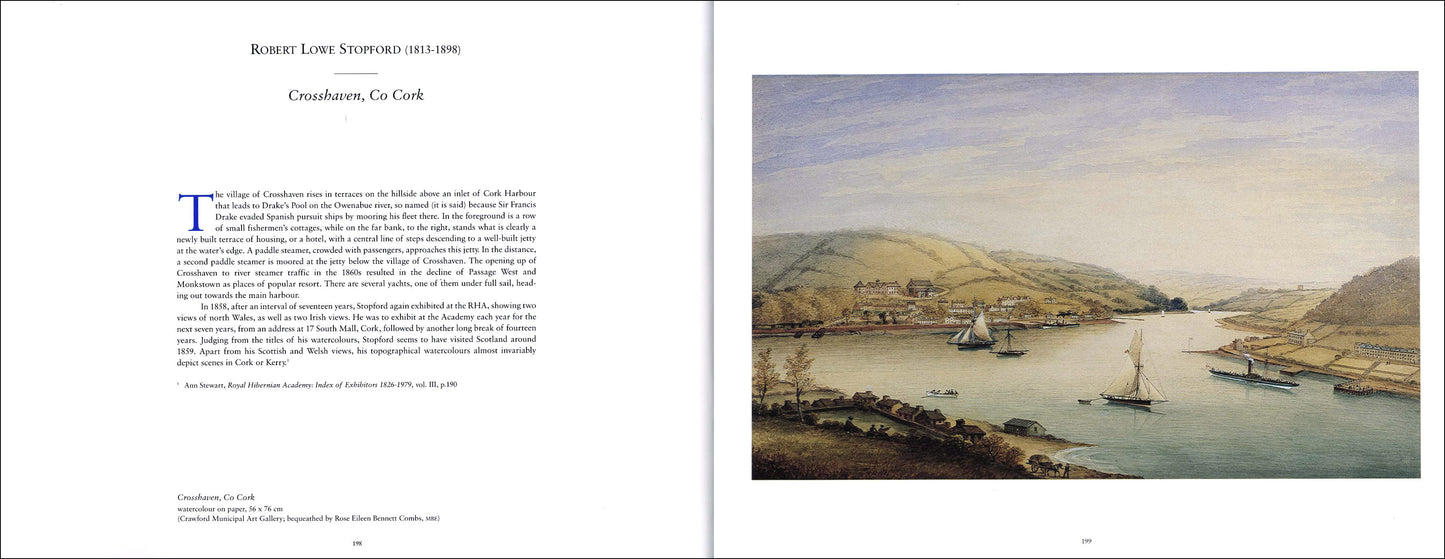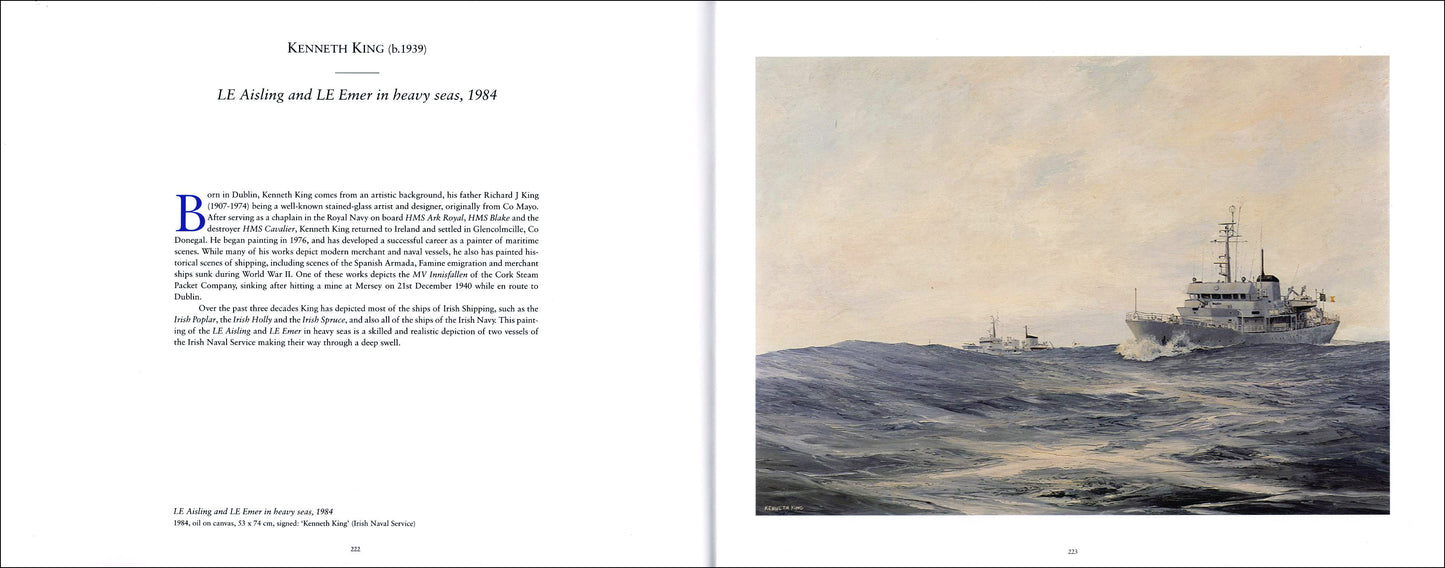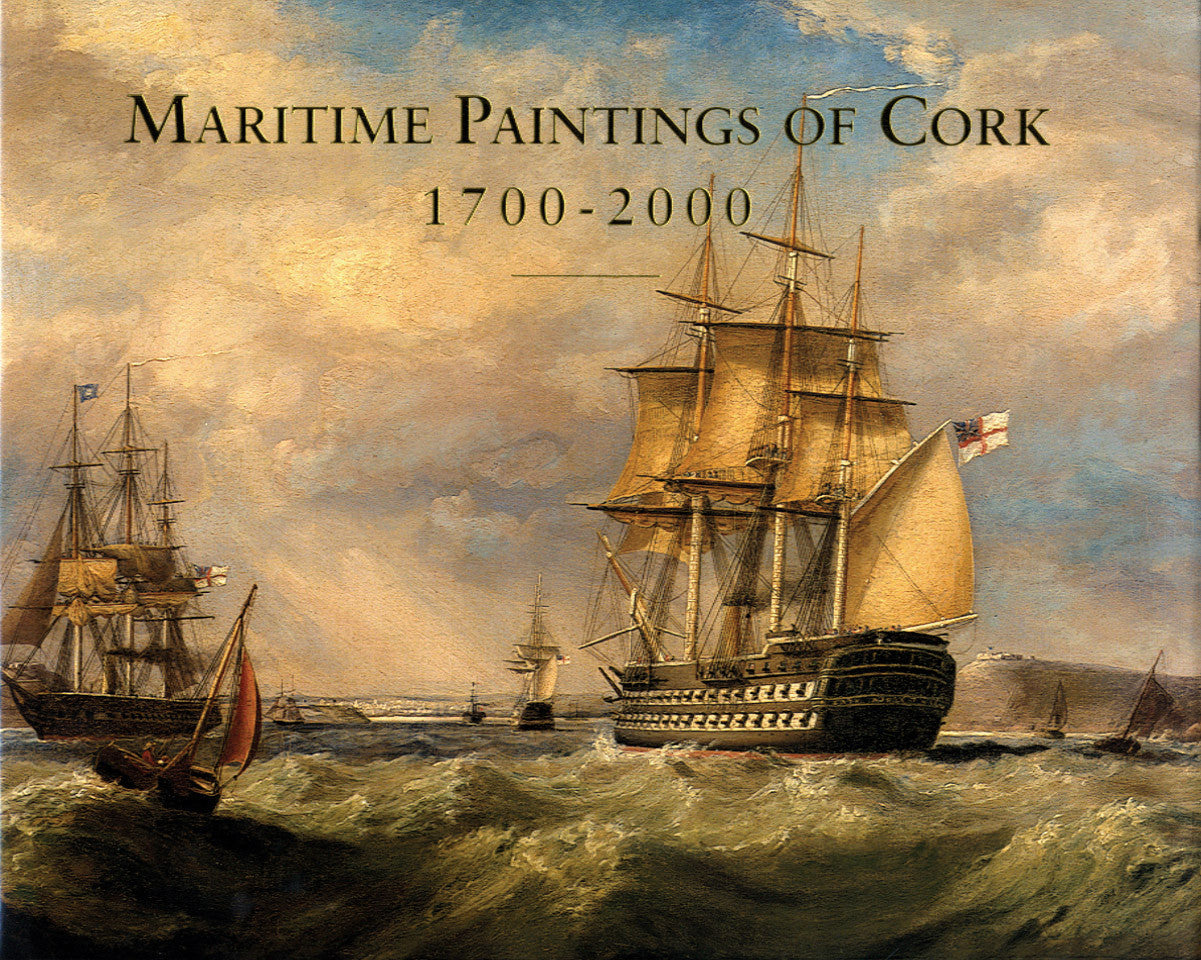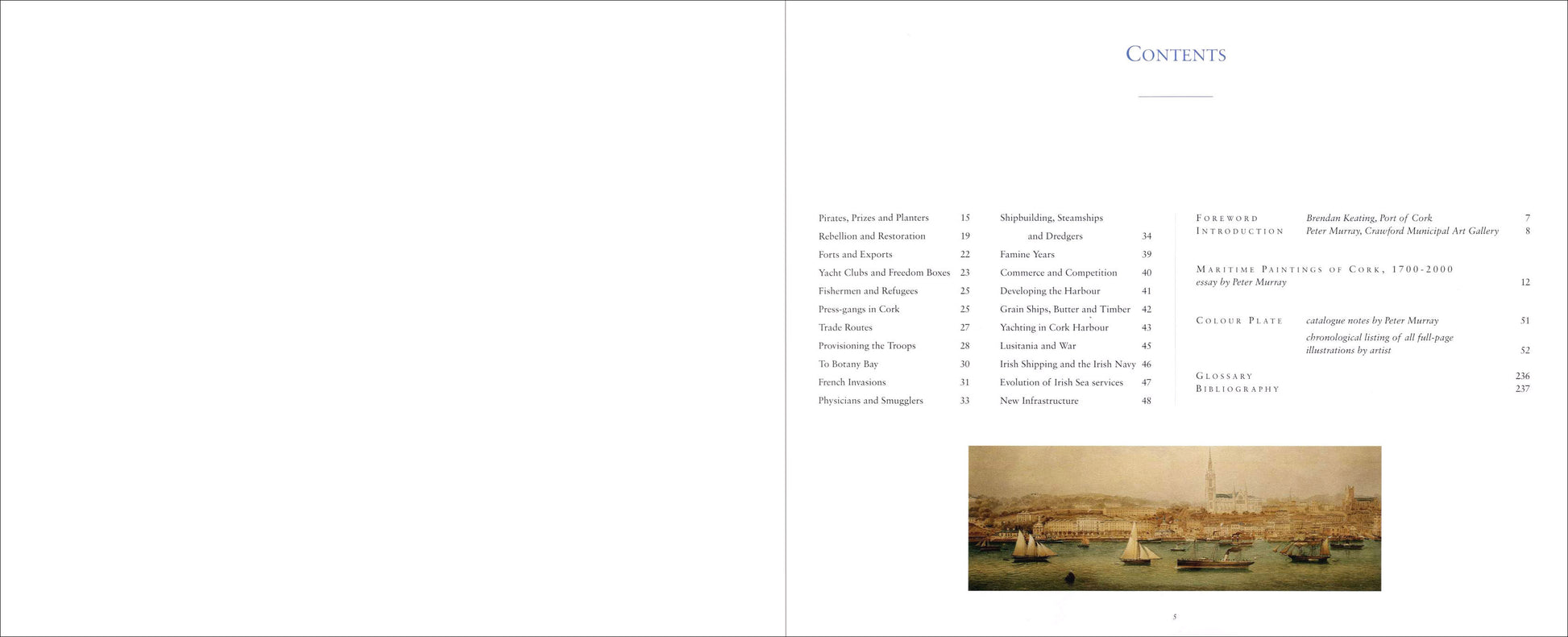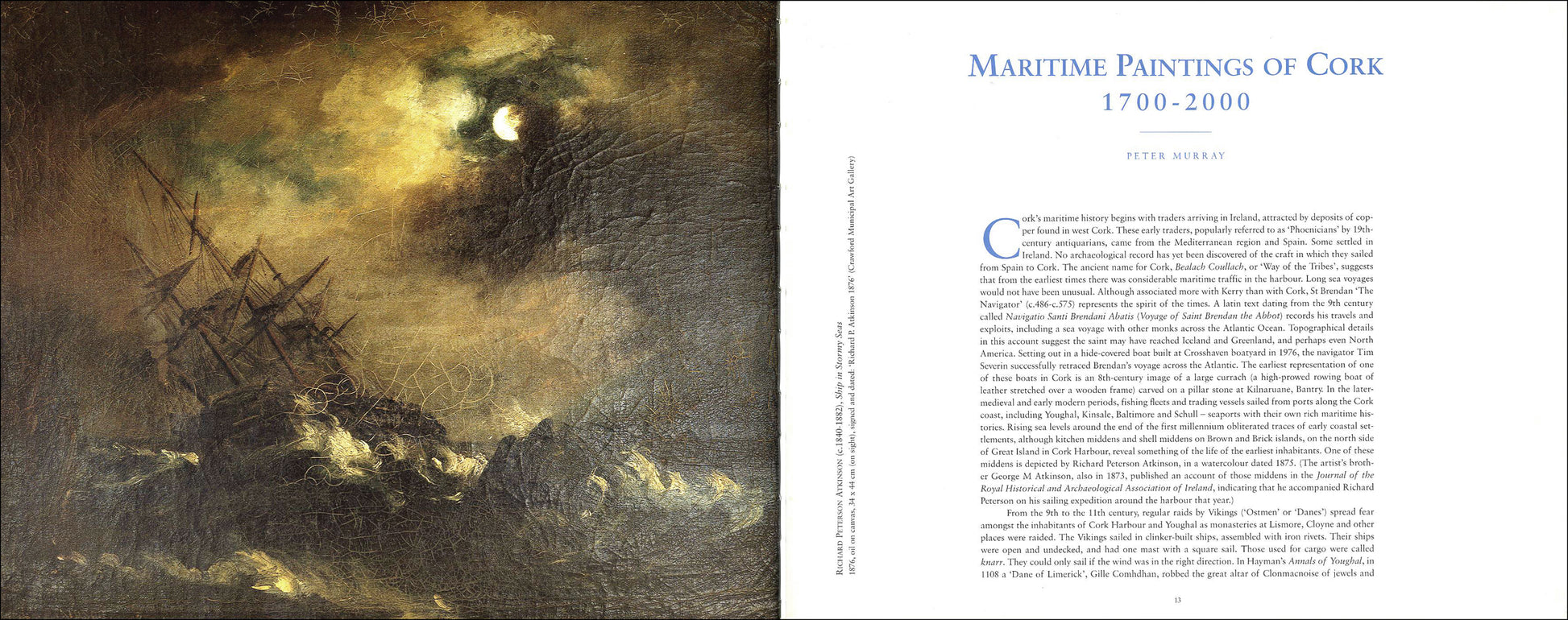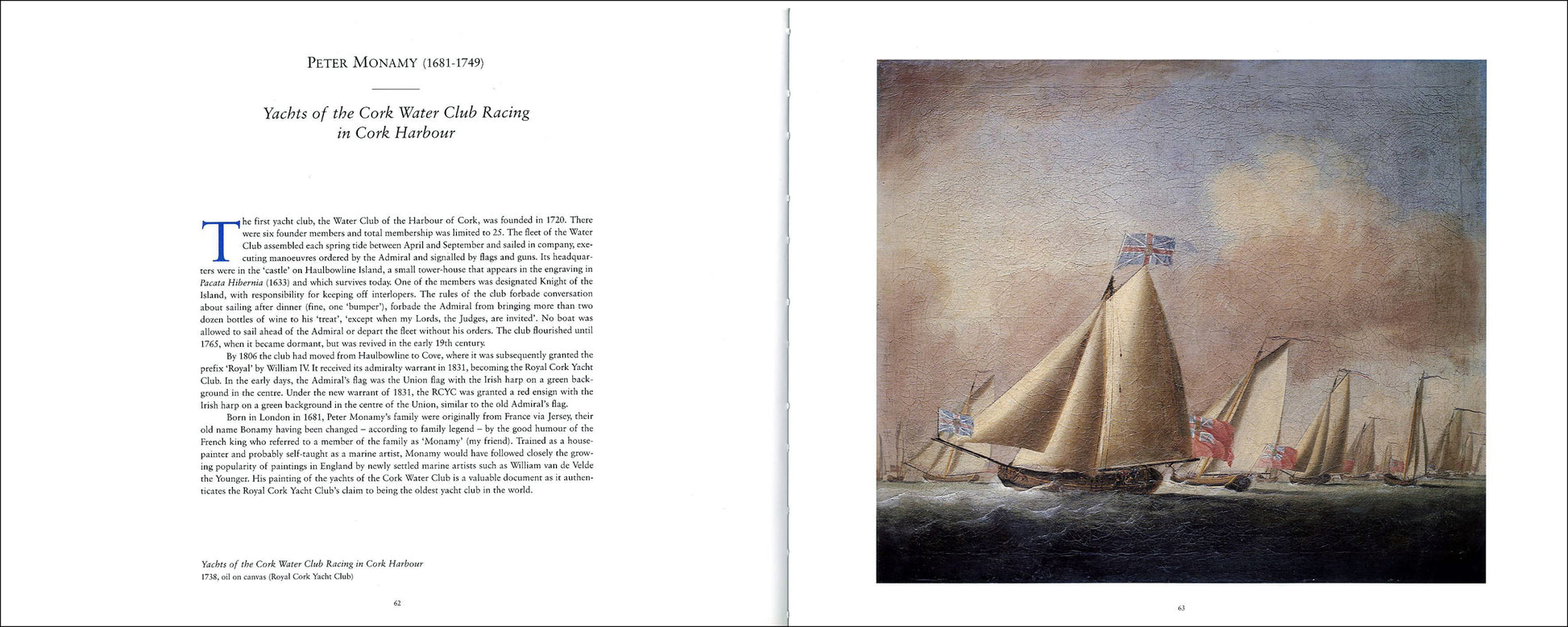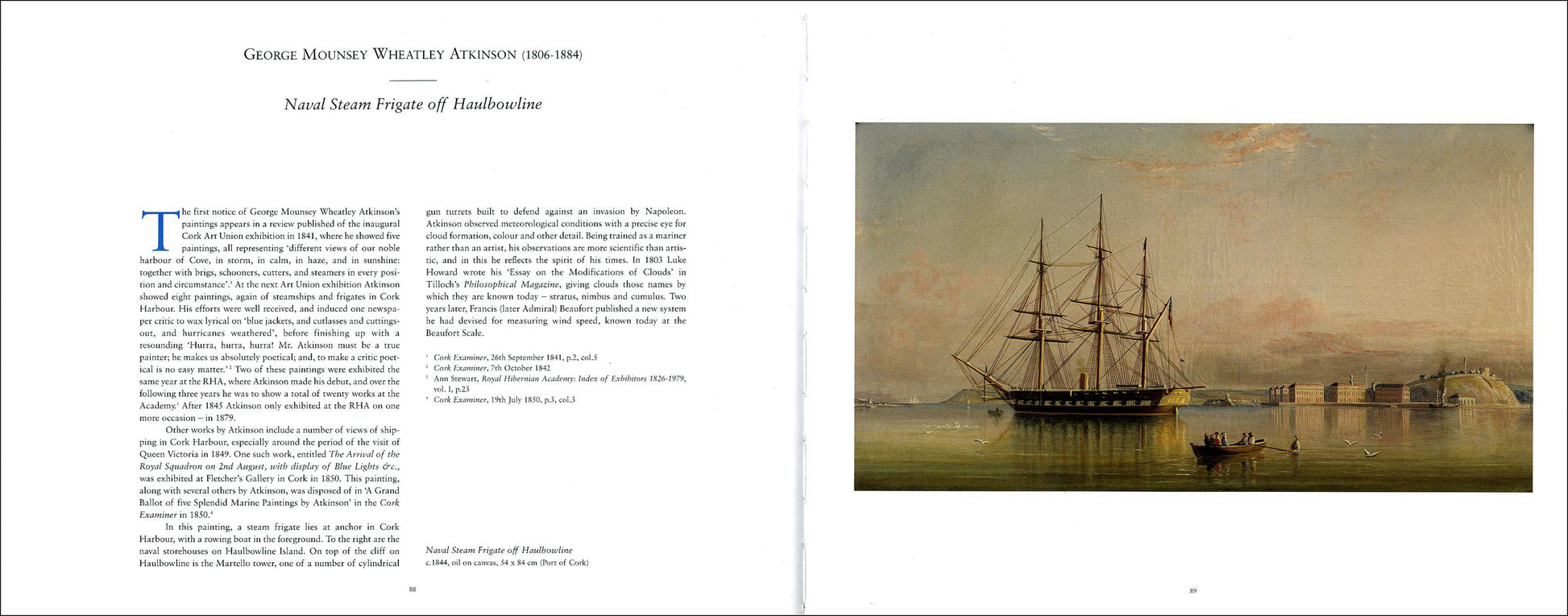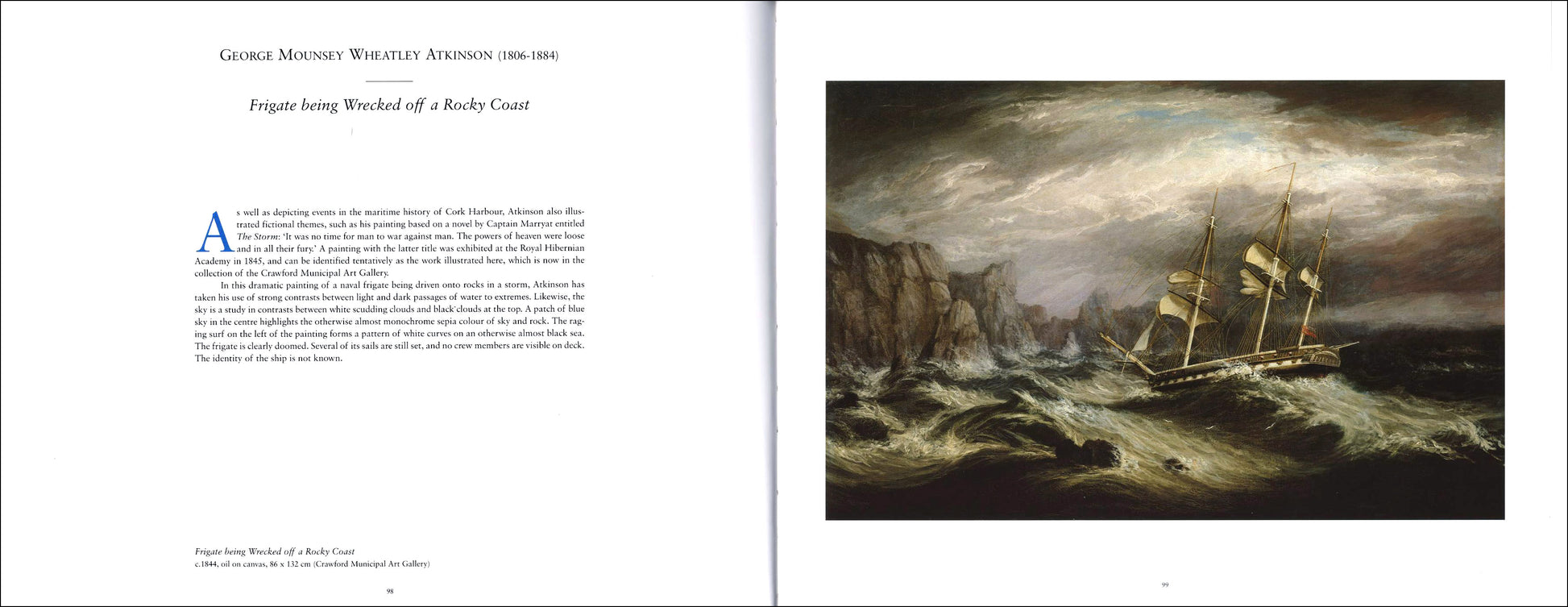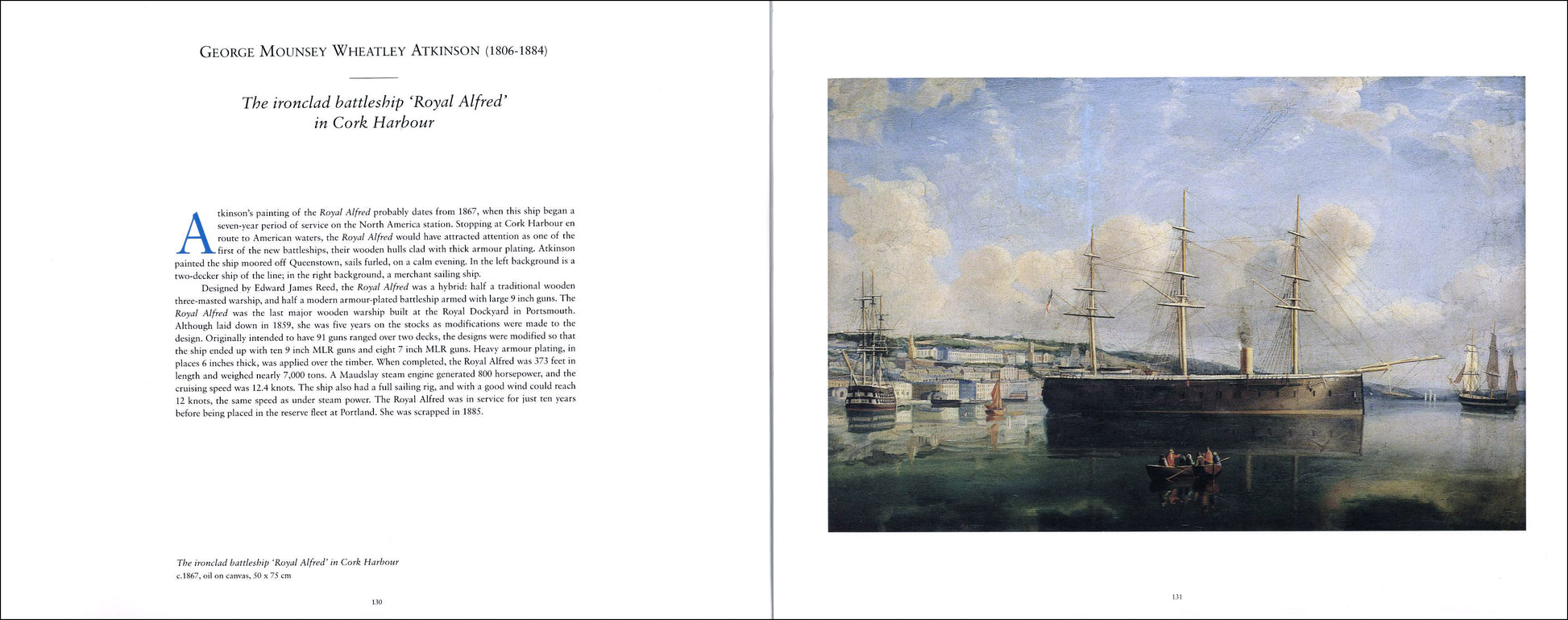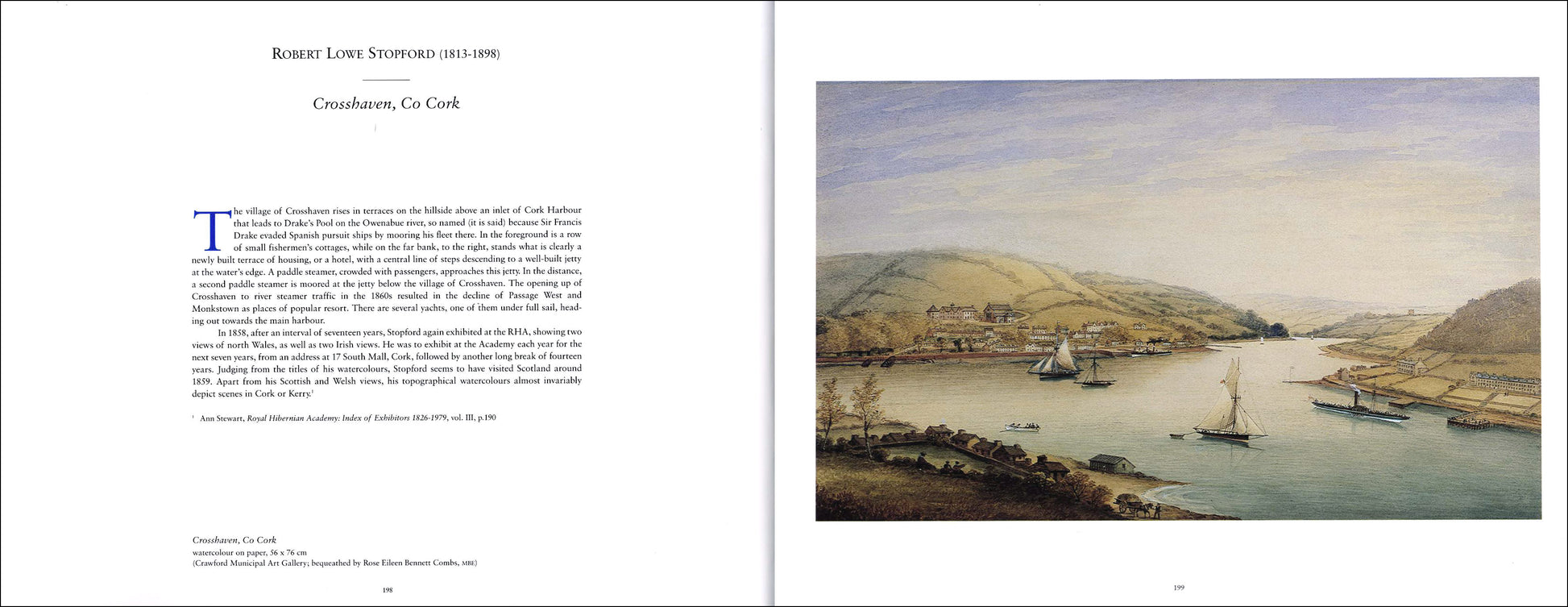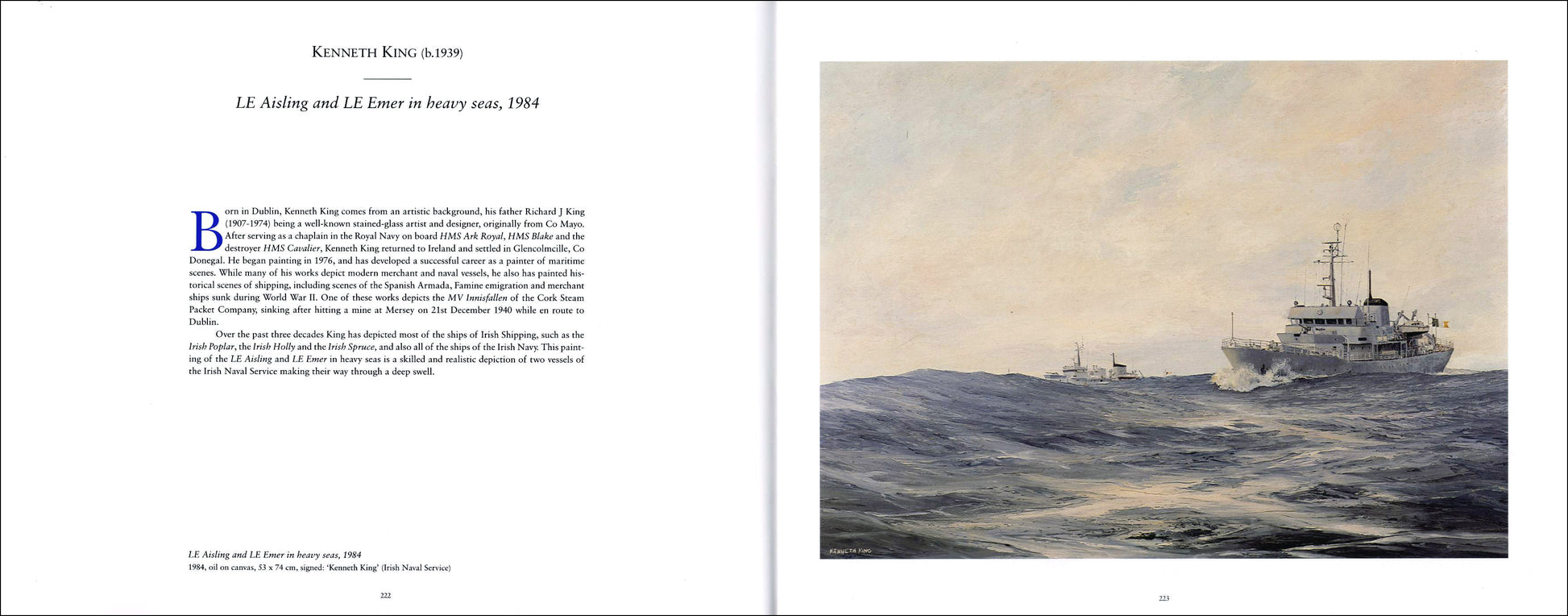Gandon / Crawford / Port of Cork
MARITIME PAINTINGS OF CORK, 1700-2000
MARITIME PAINTINGS OF CORK, 1700-2000
Couldn't load pickup availability
Share
by Peter Murray
ISBN 978 0948037 221 240 pages (hardhback) 24x30cm 137 illus artists index
Long-famed for its safe anchorages and aesthetic beauty, Cork Harbour, the largest western port of Europe, has for many years been a favourite subject of artists. This sumptuous large-format book, published to coincide with the exhibition organised by the Crawford Art Gallery and the Port of Cork, tells the story of the harbour and the River Lee from the 17th century to the present. Over 80 paintings by 31 artists are reproduced as full-page colour plates, along with engravings, maps and additional documentary material.
The earliest representations of the harbour relate to military campaigns: Pacata Hibernia includes an engraving of fortifications at Haulbowline at the beginning of the 17th century, while one of the earliest views of that same island, painted by William van der Hagen in 1738, shows it surrounded by shipping. Peter Monamy’s paintings of sailing vessels of the Cork Water Club, founded in 1720, are fascinating records of the birth of yachting as a sport. A century later, the Atkinson family of marine painters, who lived in Cobh, produced many views of naval, transport and emigrant ships in the harbour. Artists Robert Lowe Stopford and John Bosanquet also recorded social and industrial developments in the 19th century, including the building of steamships in Cork, and the development of dockyards, quays, railways and fortifications. The working life of the present-day harbour, with its ferries, trawlers and tankers, forms the subject matter of Mark Hathaway’s watercolours, while Kenneth King has depicted most, if not all, of the ships of the Irish Naval Service.
Each colour plate is accompanied by a detailed explanatory text by Peter Murray, while a chronological history of the harbour, by the same author, provides additional background information.
EXTRACT
"This book includes representations, in paintings, drawings and prints, of the maritime traffic of Cork Harbour over the past two and a half centuries. Although a brief period when compared with the six millennia or so that ships have plied the waters off the southern Irish coast, during this time the steady growth of trans-Atlantic traffic transformed Ireland from a country on the outer fringes of the known continent into an important link between the Old World and the New.
Internationally, Cork is well known as a trans-Atlantic liner terminal, and sometimes remembered also for its share of maritime tragedies: it was the last port of call for the liner Titanic, and the final resting place of the torpedoed Lusitania. The maritime paintings of Cork can be read in two ways. On one level, these images of fine ships cresting the waves are a splendid evocation of the era of steam and sail, full of the romance of travel and adventure. On another level they tell a more prosaic story, of tonnages, taxation and capacities. Sailing ships are creations of great beauty, but they are also instruments of state policy. The streams of colourful flags fluttering from masts identify vessels in Lloyd’s Register of Shipping. Noble men-of-war, impeccably turned out and riding at anchor, are also weapons of great destructive power.
The ships depicted in this book, along with their cargoes and passengers, transformed the harbour, by turns, into a place both exotic and prosaic. They also defined Cork’s position in the development of a modern global economy. Virtually none of the ships has survived, making these paintings all the more valuable as a record of an important part of Ireland’s social, industrial and political heritage.
— from the introduction by Peter Murray
|
CONTENTS Foreword by Brendan Keating, Port of Cork 7 COLOUR PLATES catalogue notes by Peter Murray 51-235 Chronological listing (by artist) of all full-page illustrations FEATURED ARTISTS Joseph Poole Addey (1852-1922) / George Mounsey Atkinson (1830-1908) /George Mounsey Wheatley Atkinson (1806-1884) / Richard Peterson Atkinson (c.1840-1882) / John E Bosanquet (fl.1854-71) / John Brandard (fl.c.1860) / Val Byrne (b.1936) / A Cox (fl.1886) 214-215/ TG Dutton (fl.1864) 186-187/ English School (18th century) 72-73/ John Fitzgerald, ‘Bard of the Lee’ (1825-1910) / Richard Foley (fl.1861) / John Gilbert (1846-1915) / Nathaniel Grogan the Elder (c.1740-1807) / Henry Albert Hartland (1840-1893) / Mark Hathaway (b.1960) / Irish School (19th century) / Seán Keating (1889-1997) / Kenneth King (b.1939) / Rev J Lindsay (fl.1758-1771) / Jeremiah MacCarthy (fl.1798) / Samuel McDonnell (fl.1857) / Murdoch Mackenzie (1712-1797) / James Mahoney ARHA (1810-1899) / Peter Monamy (1681-1749) / Henry Morgan (fl.1849) / Thomas Sautell Roberts (1760-1826) / Richard Robert Scanlan (fl.1826-64) / Robert Lowe Stopford (1813-1898) / William van der Hagen (fl.1720-45) / Samuel West (1810-1867) |
|
This is a superb and very desirable permanent record of what must have been a delightful exhibition, admirable from its binding cloth (endpapers, silk bands and a silk marker all match) and splendidly gold-blocked jacket through to every detail of design and execution. — Books Ireland A closely observed, engrossing account of the topography and history of Cork Harbour, its ships and shipping ... The book is a superb production, visually rich but also excellently documented, and boasting a hugely informative introductory text by Crawford director Peter Murray. — Aidan Dunne, Irish Times This book can only be described as a treasure, with superb production, down to a yellow ribbon page-marker. Gandon Editions and all connected with this work have distinguished themselves. — Rory Brennan, Books Ireland |
